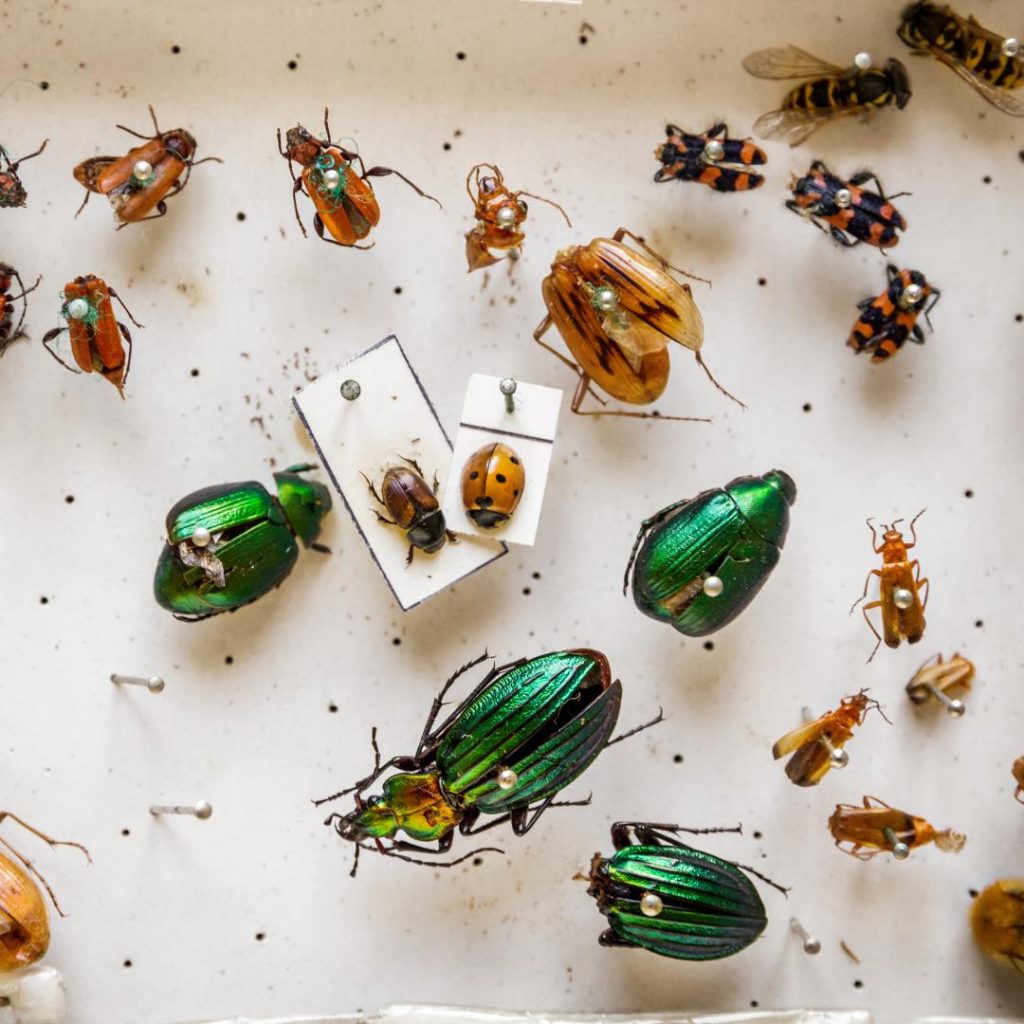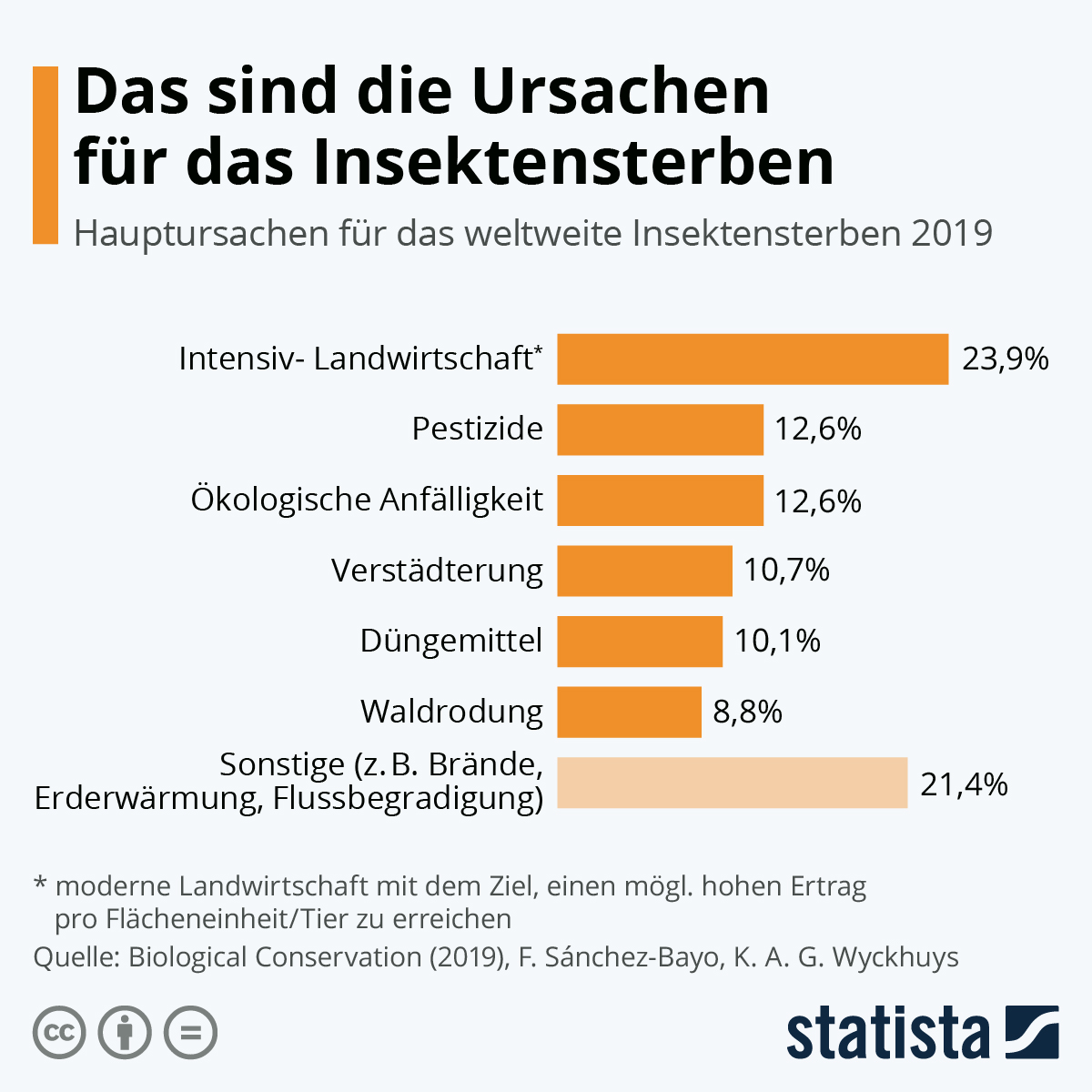New research findings on insect mortality

For years, experts have been observing a decline in insects and their problematic effects on the entire ecosystem. The study by Hallmann et al. published in the journal PLoS ONE in 2017, which found a 75% reduction in insect mass in Germany within three decades, is particularly well known. However, the analysis of possible reasons - such as the influence of climate factors, agricultural use and certain habitat factors - did not provide a clear explanation. Since then, researchers have been searching for the causes.
A new study by a team led by ecologist Jörg Müller from the University of Würzburg, which assumes that the weather plays a decisive role in the number of insects, has sparked a controversial debate among experts. "The results of the 'Hallmann study' shocked me at the time, but as scientists we naturally have a duty to get to the bottom of the matter," he says in an interview with science.ORF.at.
Data reanalyzed
Müller found an astonishing number of insects in his garden and the surrounding area and, together with colleagues from TU Dresden, TU Munich and the University of Zurich, set about catching and weighing flying insects in Bavaria in so-called Malaise traps and comparing the total weight with the data from the "Hallmann study".
"We found an average biomass that was almost as high as the maximum values from the Hallmann study," explained Müller, according to the University of Würzburg. The team then analyzed the data again, taking into account the effects of the weather, and came to the conclusion that the weather and, in particular, unusual fluctuations in temperature and weather have a decisive influence on the number of insects.
Bad weather conditions
From 2005 onwards, the weather conditions were predominantly bad for insects: The summers were too wet and the winters too dry and warm. In 2022, on the other hand, they were very good. According to Müller, these can be held partly responsible for the worrying results of the "Hallmann study". He assumes that, despite the recently observed increase in biomass, new combinations of unfavorable multi-year weather conditions can be expected to continue to threaten insect populations if climate change persists.
Other causes
However, Müller also sees other causes for the insect decline: "Land use, i.e. agriculture of course, but also every person who seals areas for residential areas or roads, takes away the habitats of insects and many of our endangered species therefore only have small, fragmented populations."
"We have the decline in biomass, but we also have the clear observation that rare species are disappearing from the landscape without a trace. It's just that we haven't really been able to bring the two things together yet. And I think this interaction between weather and global warming on the one hand and the limited habitat areas on the other explains very well how one is connected to the other," says Müller.

Other important factors are missing
This has led to many reactions within the research community. The study has "a number of serious methodological weaknesses", Axel Ssymank from the Federal Agency for Nature Conservation told the German Press Agency. Among other things, this meant that "no statements could be made on the relative significance of the decline in insects due to changes in agricultural use".
Johannes Steidle, Director of the Zoological and Veterinary Museum at the University of Hohenheim, said that it is clear that insect populations are heavily dependent on the weather. The main cause of insect mortality is the intensification of agriculture. "This current study does nothing to change that."
Reasons for insect mortality

BUND Naturschutz cites the following reasons for insect mortality:
- Toxins and pollutants released into the environment from industry, households and agriculture
- The use of neonicotinoids, which leads to nerve damage in insects and thus to their death
- Pollution of the environment with nitrogen (for example through fertilization in agriculture), which leads to a reduction in plant species
- Destruction of habitats
- Fragmentation of habitats - island formation
- Intensive agricultural use
- Changes due to climate change - milder temperatures, lack of frost, drought
- Light pollution
https://news.pro.earth/2023/04/19/lichtverschmutzung-die-helle-not-nachtaktiver-insekten/
Our pro.earth.conclusion: "Unlike wolves, polar bears and tigers, insects are all around us. What we do in our everyday lives makes a huge difference to insects." We must act now to avert the great extinction. Some insect species are quietly going extinct without us even noticing - unlike wolves, polar bears and tigers. The use of insecticides and the overexploitation of natural habitats must be prevented as far as possible in order to alleviate this difficult situation.






